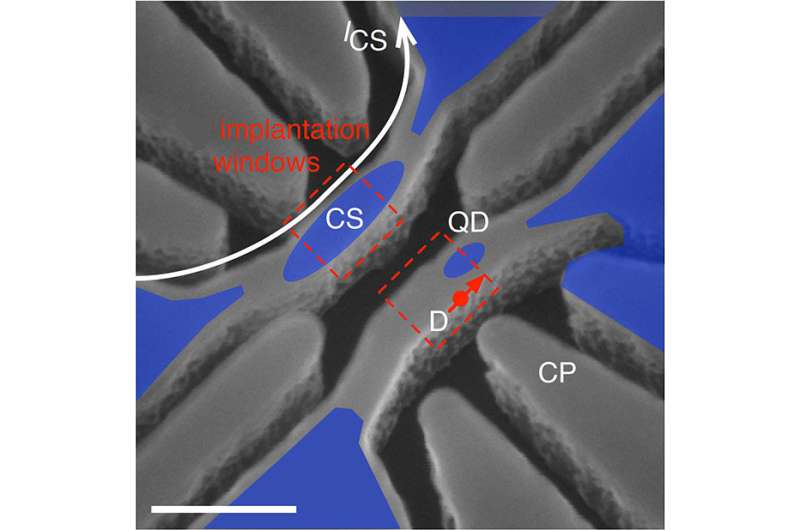Scientists demonstrate coherent coupling between a quantum dot and a donor atom in silicon

Quantum computers could tackle problems that current supercomputers can't. Quantum computers rely on quantum bits, or "qubits." Current computers perform millions of calculations, one after the other. Qubit coupling allows quantum computers to perform them all at the same time. Qubits could store the data that add up to bank accounts and medical records. In an unusual twist, qubits represent data by the binary state of electron spins. Two systems existed to create qubits. Researchers successfully integrated the systems—donor atoms and quantum dots. The new qubits don't let the spins, and hence the data, degrade. Specifically, the bits demonstrate coherent coupling of the electron spins. This hybrid approach, which has remained elusive until now, exploits the advantages of the two qubit systems.
For almost two decades, scientists have created theoretical proposals of such a hybrid qubit (donor qubit) architecture. Now, researchers have made an important step toward the practical realization of silicon qubits. Silicon matters. Why? It is the same material used today in our personal computers. The manufacturing process for qubits could fit within today's manufacturing and computing technologies.
Qubits form the basis of quantum computation. Building a practical quantum computer demands two important features: the maintenance of coherent quantum states and the assembly of qubits. Coherence can be thought of as an ideal property of the interacting wavefunctions that describe particles. Silicon is an appealing qubit material as it provides an environment that minimizes quantum decoherence. Additionally, there is already infrastructure in place for building silicon devices. However, the second critical requirement—assembling the qubits—has proven immensely challenging. Donor atoms must be embedded in silicon in such a way that their interactions can be controlled. Achieving this demands extreme precision.
A collaboration between scientists from Canada, Sandia National Laboratories, and the Center for Integrated Nanotechnologies has uncovered an alternative to this donor coupling arrangement—by using quantum dots (QDs). In a cornerstone advance, the researchers demonstrated coherent coupling of the electron from a phosphorus donor atom and an electron of a metal-oxide semiconductor QD. This approach is advantageous. It does not require the extreme degree of placement accuracy as donor coupling. The electronic states of this system are controlled by the nuclear spin of the donor atom, providing a simple integrated method for interacting with the qubit. Thus, there is no need to use additional micromagnets or QDs.
More information: Patrick Harvey-Collard et al. Coherent coupling between a quantum dot and a donor in silicon, Nature Communications (2017). DOI: 10.1038/s41467-017-01113-2
Journal information: Nature Communications
Provided by US Department of Energy




















